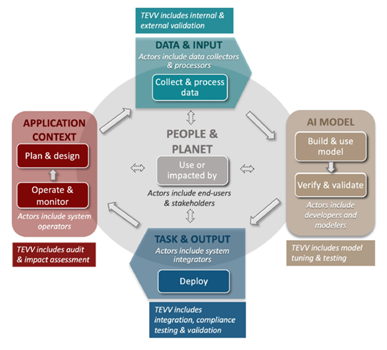Setting New Heights: In What Ways AI Risk Management Tools Improve Decision Making
In today’s rapid and continuously changing arena, companies face a myriad of threats that can affect their strategic choices. Conventional risk evaluation techniques often fall short in delivering the timely insights needed to navigate these challenges effectively. As companies strive to enhance their planning processes and operational effectiveness, the rise of AI-driven risk assessment tools has shown to be a game changer. These novel tools utilize the capabilities of machine intelligence to examine large quantities of data, identify possible threats and offer applicable insights that empower executives.
AI risk assessment generators not only accelerate the evaluation process but also improve precision and dependability in risk prediction. By harnessing predictive analytics algorithms and cutting-edge data analytics, these tools can uncover underlying patterns and trends that might otherwise go unnoticed. As a consequence, companies can make educated decisions that mitigate risks while maximizing growth potential. In this piece, we will explore the multiple benefits of integrating AI risk assessment tools into the decision-making process, demonstrating how they are setting new standards for businesses across different industries. spintax #### A Value of AI Risk Assessment
In the current swift and complicated business environment, comprehending and alleviating risks is vital for success. Firms face various challenges, from adherence to regulations to threats to cybersecurity, making evaluating risks a critical component of long-term planning. An efficient risk assessment not only recognizes potential vulnerabilities but also helps organizations to make well-informed choices. AI risk assessment generators play a pivotal role in enhancing this process by offering cutting-edge analytical capabilities that allow a thorough understanding of various risk factors.
AI risk assessment generators examine extensive quantities of data quickly and accurately, allowing organizations to identify trends and potential risks that may not be immediately apparent. This capability is particularly valuable in fields that face swift transformations and require timely information. By utilizing machine learning algorithms, these tools can constantly learn from updated information, ensuring that risk assessments continue to be relevant and fresh. As a result, companies can proactively address risks and capitalize on opportunities, leading to enhanced decision-making.
Moreover, the incorporation of AI in risk assessment contributes to more consistent and objective evaluations. Human judgment can be influenced by partialities and subjective experiences, which can result to inconsistent risk evaluations. In contrast, AI risk assessment generators depend on data-driven approaches, promoting clarity and fairness in making decisions. This not only aids firms build trust among investors but also encourages a culture of accountability, ultimately enhancing total organizational resilience.
Key Features of AI Risk Assessment Tools
Artificial Intelligence risk evaluation instruments deliver a range of functionalities that notably enhance the decision making process. One important aspect is sophisticated information analytics, which allows the tools to process vast amounts of information rapidly and detect connections that humans might overlook. This capability ensures that companies can make well-founded choices based on thorough insights, improving the reliability of their analyses and strategies.

Another notable aspect is live tracking and reporting. AI risk assessment generators can persistently examine risk factors and instantly adjust reports to reflect the latest data. This dynamic method enables entities to be proactive against potential risks and adjust their strategies in response. By offering immediate data, these tools enable decision-makers to act quickly to developing risks, encouraging a forward-thinking rather than responsive approach.
Compatibility with existing infrastructures is also a prominent aspect of AI risk assessment tools. They can function effortlessly with an entity's current system, enhancing processes without resulting in major disruptions. This integration allows for a more cohesive risk control framework and ensures that all relevant data is utilized effectively, thus maximizing the overall efficacy of decision making processes.
Practical Applications and Examples
In the financial services industry, companies have begun to utilize AI risk assessment generators to simplify their decision-making procedures. By examining vast amounts of financial data, these applications detect potential threats associated with loans, investments, and financial fluctuations. For ai risk assessment generator , a leading bank utilized an AI risk assessment generator to enhance its credit scoring system, resulting in more precise assessments of clients. This not only did it improve risk management but also allowed the bank to extend credit to previously underserved groups, effectively improving their market presence and customer satisfaction.
Another notable case can be seen in the healthcare sector, where AI risk assessment applications are transforming patient care and safety. A healthcare provider adopted an AI-driven risk assessment tool to evaluate patient data and predict complications in surgical operations. By doing so, the organization was able to minimize post-operative issues significantly and improve patient outcomes. This application illustrates how AI risk assessment tools can help healthcare professionals make well-informed decisions, resulting in better resource allocation and enhanced patient care.
In the manufacturing industry, a leading company adopted an AI risk assessment tool to spot supply chain weaknesses. The generator evaluated historical data, climatic data, and geopolitical factors to predict disruptions in the supply chain. As a result, the company could proactively address potential risks by spreading out suppliers and adjusting inventory strategies. This practical application demonstrates the power of AI risk assessment tools in reducing risks and enhancing operational effectiveness, ultimately resulting in better business resilience and decision-making.